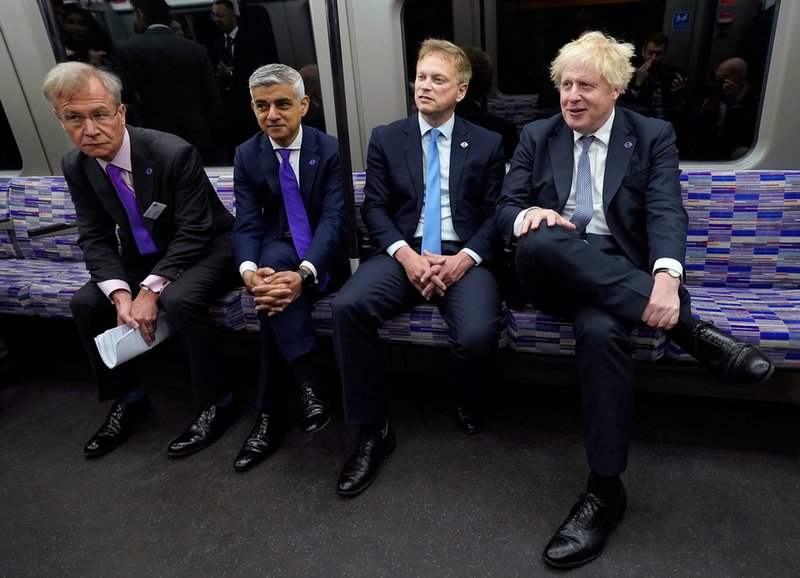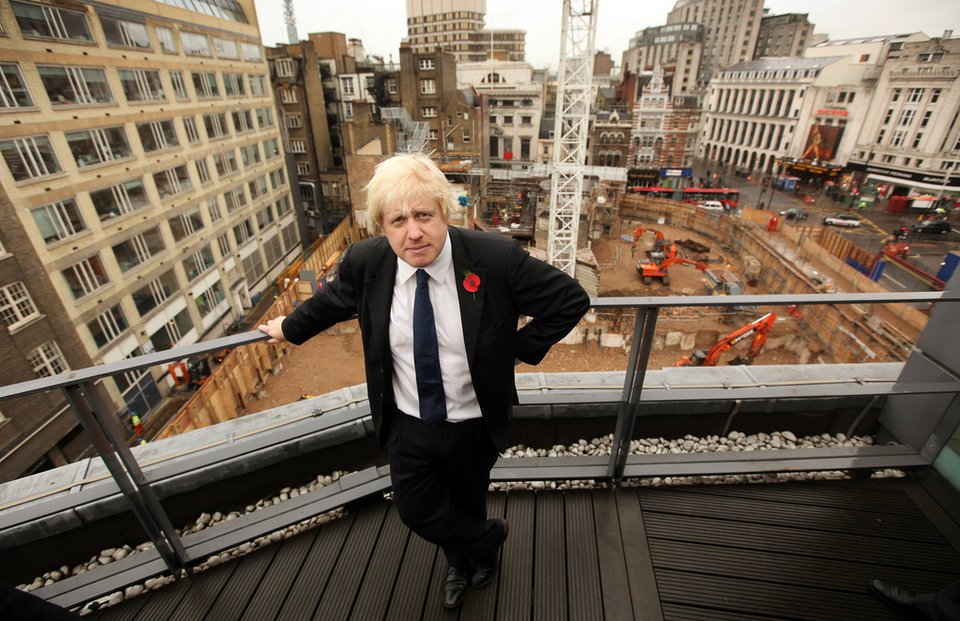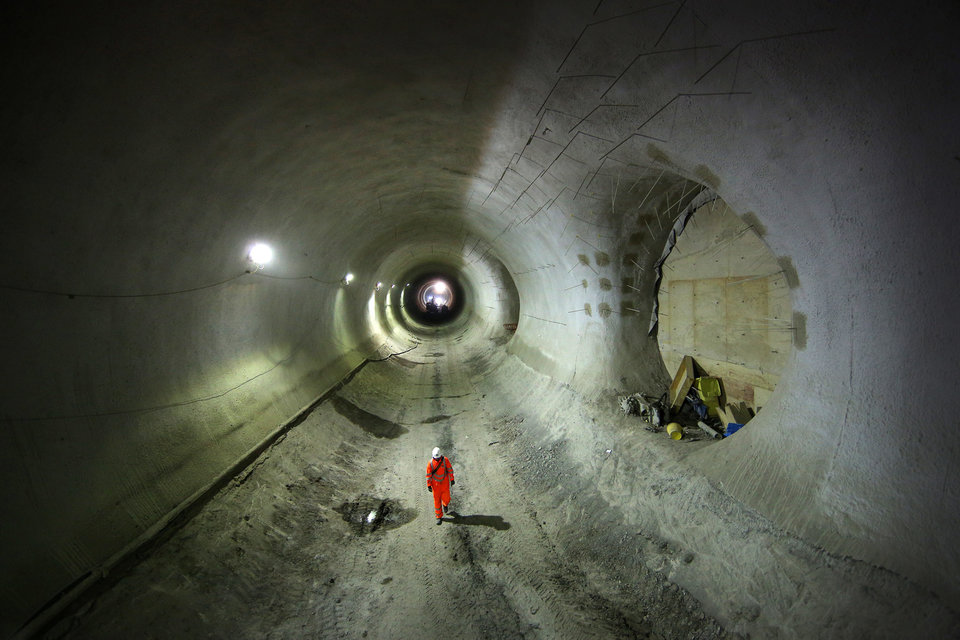Projects
Crossrail's journey: a timeline of delays
Besieged with problems, London’s Crossrail is hugely over budget and even more considerably late. Andrew Tunnicliffe walks through the timeline of construction delays and considers what other, indirect, difficulties had on the overall project delivery.
Q
ueen Elizabeth II surprised onlookers in May when she joined other dignitaries at London’s Paddington Station for a somewhat surprise opening of the new Elizabeth Line, a week before the official date.
Along with Prime Minister Boris Johnson, London Mayor Sadiq Khan, Transport Secretary Grant Shapps, and Transport for London’s (TfL) commissioner Andy Byford, she greeted construction workers and staff who will play a key role in the line’s operations.
Formerly known as Crossrail, the line is designed to carry passengers across the capital and surrounding areas. It will operate from Shenfield in Essex, and Abbey Wood in Southeast London, to Reading in Berkshire and Heathrow Airport on the outskirts of West London.
The official opening was the culmination of more than 12 years of work on the project, at a cost of almost £19bn ($23.7bn). The final budget was significantly higher than had been originally earmarked, projected to be £14.8bn ($18.5bn) in 2010. The project’s finances have been dogged with difficulties almost from the outset; complications that rippled through the construction phase too.

Britain’s Prime Minister Boris Johnson (R), Britain’s Transport Secretary Grant Shapps (2R), Mayor of London Sadiq Khan (2L), and Crossrail COO Howard Smith (L) sit in the carriage of an Elizabeth Line train during a visit to Paddington Station on 17 May 2022, to mark the completion of London’s Crossrail project. Credit: Andrew Matthews/Pool/AFP/Getty Images
The project’s numbers are staggering – not just from a financial perspective. Journey times will be dramatically reduced, cut by as much as half between Abbey Wood–Paddington (cut by 29 minutes) and Liverpool Street–Woolwich (by 15 minutes). A journey from Farringdon to Canary Wharf will be 14 minutes quicker too, down to just 10 minutes.
Although heralded as a success at the opening ceremony, the project has been mired with difficulties since it was first approved in 2005. Prime Minister Gordon Brown finally signed off on the project in late 2007, with expectations it would open in December 2017 and cost £15.9bn ($19.9bn).
What happened next was often controversial, arguably shambolic, and sadly on a few occasions tragic. The below timeline covers significant construction dates and the events – political and financial – that impacted the project’s timetable and led to the delays in the Crossrail project.
May 2009
Breaking ground
London Mayor Boris Johnson was joined by Transport Secretary Lord Adonis to kick off construction with a breaking ground ceremony, which included the laying of the project’s foundation stone at Canary Wharf.
Crossrail had already issued a rash of compulsory purchase orders for several properties in the Tottenham Court Road area, including the legendary 2,000 capacity music venue, The Astoria. These compulsory purchase orders were the first to be sent on behalf of the project, signalling the beginning of preparatory work.

Mayor of London, Boris Johnson, stands on a balcony overlooking the Crossrail construction site at Tottenham Court Road tube station on 27 October 2009 in London, UK. Credit: Oli Scarff/Getty Images
The general economic coronavirus aid of the federal government that has been initiated so far does not offer effective help
October 2010
Crossrail delayed by the coalition
A little over a year into construction and the first example of the impact politics would have on the project was afoot. The election of the UK’s first coalition government since World War II, comprised of the Conservative Party and the Liberal Democrats, dramatically changed the political landscape, as well as government spending priorities.
Following the Comprehensive Spending Review, the budget was cut by almost £1bn ($1.3bn) and Crossrail was delayed; the schedule was pushed back by a year. The penned opening was now earmarked for December 2018.
May 2012
Boring, drilling, and tunnels
The tunnelling phase of the project began. It would last three years and involve eight huge tunnelling machines working under the streets of London, day and night. Each machine was operated by a team of 20 “tunnel gangs” and comprised of not only the mechanical instrumentation but also a kitchen and toilets.
At 1,000 tonnes and 150 metres long, they could bore up to 38 metres per day collectively. As the boring continued, more than 200,000 segments of tunnel were joined to create the 42km of new tunnels.
January 2014
More warnings of Crossrail delays
One of the first signs emerged that construction wasn’t going to plan, as the UK’s National Audit Office warned that Crossrail could be further delayed, saying that the project was “just behind schedule”. However, it added that Crossrail was confident it would open as planned.
Crossrail Ltd was established in 2001 to oversee the build of the lines and stations. Owned by TfL, the company was funded by the transport operator and the UK Government’s Department for Transport. Now that the line is operational, the line and its stations are managed by TfL, which includes more than 100km of track and 41 stations – 10 of the purpose-built for the service.

Mayor of London Boris Johnson (C) stands with Crossrail construction workers, near one of the 1,000-tonne tunnel boring machines in London’s docklands area on 31 May 2013. Credit: Leon Neal/AFP/Getty Images
March 2014
Fatalities and fines
A 43-year-old construction worker was killed while working at Fisher Street in Holborn. Renè Tkáčik was working in the tunnels while construction was of a crossover tunnel between two train tunnels was simultaneously in progress. He was spraying tunnel walls with concrete when a section of the roof fell.
His death was one of several incidents that resulted in a number of construction firms receiving hefty fines totalling £1m ($1.3m), after being brought to court by the Health and Safety Executive. The three – BAM Nuttall, Ferrovial Agroman (UK), and Kier Infrastructure and Overseas – were fined £300,000 ($374,724) for the death of Tkáčik, and a further £775,000 ($968,037) for two further unrelated incidents that resulted in serious injury to two other workers.
Sadly, there were several other construction-related deaths and injuries above ground too. Many cyclists and drivers were involved in accidents with Crossrail lorries transporting machinery and building waste over the years.
July 2018
Additional budget
Despite some successes, it was now that the severity of the Crossrail delays came to light. The project was hit with what one government minister called “cost pressures”, resulting in its budget being increased.
Just a few weeks later, speculation mounted that Crossrail was encountering construction delays and challenges with the complex signalling systems required for operation. Acknowledging those concerns, Crossrail delayed the opening of the line from December 2018, adding that it hoped to achieve a scaled-back opening of just the central section of the line in late 2019.
April 2019
Optimistic predictions
Following a further increase to the budget via a financial package put together by TfL, the UK Government, and the London Mayor’s office – as well as the departure of Crossrail Ltd’s chairman – a so-called “delivery window” of sometime between October 2020 and March 2021 was confirmed by Crossrail CEO Mark Wild – for the central section at least.
October 2019
Bond Street action
Following the sudden deaths of up to five Crossrail employees, although not directly related to the work they were doing at the time, workers were said to have “downed tools” at Bond Street station. They were concerned about working conditions, while it was alleged by one worker that management was “more interested in making sure that it doesn’t get out. Really, they are trying to keep everything quiet”.
In response to the suggestion that the deaths were related to the beneath-ground conditions, a Crossrail spokesperson told the media: “Crossrail demands the highest standards of health and safety across the project and we continue to work closely with our Bond Street contractor Costain Skanska Joint Venture in support of making sure this is the case.”

A worker walks through the partially completed Crossrail Bond Street station tunnel on 8 December 2014. Credit: Peter Macdiarmid/Getty Images
March 2020
The pandemic leads to further delays
In March 2020, Crossrail was delayed by something that nobody could have seen coming when the project was in the planning process: a global pandemic. Almost all work on the project was halted due to the arrival of Covid-19 in the UK. According to a Public Accounts Committee report in October 2021, the pandemic added £234m ($292.3m) in costs to the already inflated project budget.
After saying that costs had increased again and that the line would open as soon as “practically possible” in 2021, in November 2020 Crossrail was forced to abandon plans to open in the summer of that year, citing the impact of the Covid-19 pandemic. It later said that the new working opening date was sometime in the first half of 2022.
March 2021
TfL handover continues
Farringdon station became the latest to be handed over to TfL after Custom House. Several other stations’ ownership was transferred to the transport body later that year, including Tottenham Court Road, Woolwich, Liverpool Street, and Paddington.
Even today, Bond Street station remains a thorn in the side of Crossrail’s central section complete opening, with current expectations that it will open in late Summer 2022. The long-running saga became public knowledge in August 2019, with Crossrail demanding changes at the top of the two firms tasked with its construction. In June the following year, Crossrail ditched both construction partners.
Wild had previously said delays were partially due to tunnelling issues; other delays included the pandemic. However, when speaking to the TfL board shortly after taking his post as Crossrail chief executive in November 2018, Wild said expectations to open the project at the end of 2018 had been “fantasy”, adding project’s new leadership was “more rooted in realism than the previous regime”.
Main image: Queen Elizabeth II (C) and Prince Edward (R) visit Paddington Station on 17 May 2022, to mark the completion of London's Crossrail project. Credit: Andrew Matthews/Pool/AFP/Getty Images.